Cheapest Way to Move Cross Country - Save $1000s Guide
The cheapest way to move across country is usually a DIY truck rental, which can cost between $1,600-$3,000 for most moves. However, if you have fewer belongings, shipping your items through services like USPS Media Mail or using portable moving containers can be even cheaper at $1,000-$2,000. This guide will help you find the perfect budget-friendly option for your cross-country move.
Moving thousands of miles is never cheap, but smart planning can save you thousands of dollars. According to the U.S. Bureau of Labor Statistics , inflation has impacted moving costs significantly, with the average long-distance move costing around $4,890 in 2025, but with the right approach, you can cut that cost in half or more.
Why Cross-Country Moves Cost So Much
Before diving into money-saving strategies, let's understand why these moves are expensive. The average cost of a long-distance move is between $2,200 to $16,900, depending on several factors:
Distance matters most. The farther you go, the more you pay for fuel, driver time, and truck wear. A move from coast to coast naturally costs more than a 500-mile relocation.
Your stuff adds up fast. More rooms typically mean more furniture and belongings. In turn, that means more packing materials, movers, and moving truck space. Moving companies often charge by weight, especially for long trips.
Timing affects prices. Summer is by far the busiest time of year to move, with nearly 45% of annual U.S. moves taking place between May and August according to U.S. Census Bureau data . High demand means higher prices during peak season.
How Much Should You Expect to Spend?
Recent data shows moving costs vary widely based on your approach:
- DIY truck rental: $1,600-$5,200 for cross-country moves
- Moving containers: $2,000-$8,200 depending on size
- Professional movers: $2,200-$16,650 for full service
- Shipping items: $500-$3,000 for smaller moves
The average American spent $2,050 on their move in 2024, but costs jump significantly for longer distances. Those who moved more than 100 miles spent $3,291 on average, compared to the $1,666 those moving less than 100 miles away spent, according to data from Consumer Affairs .
The Five Cheapest Ways to Move Cross Country
1. Rent a Moving Truck and Do It Yourself
Best for: People comfortable driving large vehicles who want maximum control
Cost: $1,600-$5,200 for cross-country moves
Renting a truck yourself is often the cheapest option. U-Haul did have some of the lowest pricing for interstate and cross-country moves among the companies we reviewed. For example, a 12-foot Penske moving truck for a cross-country trip was the lowest among all of the companies we sourced pricing from.
Money-saving tips:
- Compare prices from U-Haul, Penske, and Budget
- Penske Truck Rental is the only national truck rental company to offer unlimited miles on one-way truck rentals
- Book early for better rates
- Avoid peak summer months if possible
Hidden costs to consider:
- Gas (can be $500-$1,500+ for cross-country trips)
- Hotels if you need overnight stops
- Meals and snacks for the road
- Damage insurance
2. Use Portable Moving Containers
Best for: People who want convenience without full-service pricing
Cost: $1,000-$4,500 depending on container size
Companies like U-Pack, PODS, and U-Box drop containers at your home. You pack them, they transport them. Unlike rental trucks, where you're stuck with the size you rent, U-Pack makes it easy to get the space needed to move your belongings across the country. Reserve as many of our ReloCube® moving containers as you might need and only pay for the ones you use.
Benefits:
- No driving required
- Take your time packing and unpacking
- Often cheaper than full-service movers
- Can drive your own car to your new home
What to expect:
- 3 days to load, 3 days to unload typically
- Delivery times vary (usually 3-14 days)
- You handle all the heavy lifting
3. Ship Your Belongings Through Mail Services
Best for: People with minimal belongings, especially books and clothes
Cost: $500-$2,000 for small moves
This surprisingly affordable option works well for certain situations. When you ship via USPS/UPS/FedEx, it's going to cost you anywhere from $10 to $100 per box, depending on its size and what it contains.
USPS Media Mail is your friend. If you are only sending books, CDs, DVDs, and other media, USPS is one of the cheapest ways to ship boxes to another state. Why? Because they have a special type of shipping called "media mail". You can ship 70 pounds of books for just a few dollars.
Smart shipping strategies:
- Use USPS for heavy items under 70 pounds
- Once you get to 5 lbs. or larger, you're starting to go into the territory of the USPS. Since the USPS solely measures based on weight, the size of the box is not going to matter at all
- Consider FedEx/UPS for items 2-5 pounds
- Ship fragile items separately with insurance
4. Try Alternative Shipping Methods
Best for: Creative savers willing to try something different
Cost: $100-$500 for unique approaches
Greyhound and Busfreighter: To ship five large boxes from NYC to L.A., Busfreighter quoted $161.60, Amtrak quoted $162 (a close second), and FedEx quoted $480.75. You drop boxes at bus stations, and they arrive 3-10 days later.
Airline luggage: Some airlines let you check multiple bags cheaply. Virgin America, for example, allows you to check up to 10 bags weighing 50 pounds each for just $25 per bag.
Freight shipping: For 15+ boxes, palletized freight shipping can be cost-effective. For most companies, you can expect to pay somewhere between $75 and $200 per pallet, depending on how quickly you want it to go.
5. Hybrid Approach: Mix and Match Methods
Best for: People who want to optimize every dollar
Cost: Varies based on combination
Smart movers often combine methods:
- Drive essential items in your car
- Ship books and clothes via USPS
- Use a small moving container for furniture
- Fly with important documents and valuables
This approach lets you customize your move based on what saves the most money for your specific situation.
Money-Saving Tips That Actually Work
Start Planning Early
Begin your moving preparations at least eight weeks before your intended move date. Early planning gives you time to:
- Find free packing supplies
- Compare multiple quotes
- Book during cheaper off-peak times
- Declutter and reduce what you're moving
Time Your Move Right
Avoid these expensive times:
- Summer months (May-September)
- First and last days of the month
- Weekends and holidays
Save money by moving:
- November and December. These months are slower because families aren't traditionally moving during the holidays and when their kids are in school
- Mid-week (Tuesday-Thursday)
- Middle of the month
Declutter Like Your Budget Depends on It
The golden rule: The less you move, the less you pay. One of the most effective ways to cut moving costs is to simply move less stuff.
Smart decluttering steps:
- Start with one room at a time
- Ask yourself: "Is this worth paying to move?"
- Sell valuable items online
- Donate what you can't sell
- Throw away broken or worthless items
Turn decluttering into cash: Host a garage sale or sell items on Facebook Marketplace. The money you make can help offset moving costs.
Get Free Packing Supplies
Moving boxes and packing materials may not seem like a huge expense, but the costs can add up. Here's how to get supplies for free:
Free box sources:
- Liquor stores (sturdy boxes)
- Grocery stores
- Retail stores
- Online marketplaces (people giving away moving supplies)
- Ask friends who recently moved
Free packing materials:
- Old newspapers, magazines and catalogs. Just be careful what you wrap in them, as the ink could leave stains on some items
- Towels and blankets for padding
- Your own clothes as cushioning
- Bubble wrap from recent deliveries
Pack Smart to Save Space
Maximize every box:
- Fill empty spaces with smaller items
- Use vacuum bags for clothes and linens
- Leave clothes in dresser drawers (if not too heavy)
- Nest smaller items inside larger ones
Protect without paying extra:
- Wrap dishes in towels instead of bubble wrap
- Use socks to cushion fragile items
- Stuff shoes with small items
Understanding Hidden Costs
78% of Americans had unexpected costs during their move, and 38% say the total cost of their move was higher than expected according to research from Anytime Estimate . Don't let surprise expenses ruin your budget.
Common Hidden Costs
For DIY truck rentals:
- Fuel costs (can be $500-$1,500+)
- Equipment rental (dollies, straps, blankets)
- Insurance upgrades
- Mileage fees if you exceed limits
- Hotel costs for overnight trips
For shipping services:
- Insurance for valuable items
- Box fees if you buy from shipping companies
- Pickup and delivery fees
- Storage fees if timing doesn't work out
For all moves:
- Utility connection fees at your new home
- Travel costs for your family
- Temporary storage if needed
- Tips for any helpers
Budget Buffer Rule
Add 20% to your estimated moving costs for unexpected expenses. If you think your move will cost $2,000, budget $2,400 to be safe.
When Professional Movers Might Be Worth It
Sometimes paying more upfront saves money in the long run. Consider professional movers if:
You have valuable items: Professional movers offer specialty services for these items, such as extra wrapping, crating, and temperature-controlled transport.
You're short on time: If you're too busy or overwhelmed to handle all the to-dos, such as packing or loading, the stress might be worth the extra cost.
You have physical limitations: If you have health issues or limited mobility that make performing physical labor difficult, professional help becomes necessary.
The numbers work out: Sometimes, when you add up truck rental, gas, hotels, time off work, and potential damage, professional movers aren't much more expensive.
Special Considerations for Long-Distance Moves
Moving with Pets
Driving yourself: Keep pets in a separate car if possible. There isn't enough room in the cab to house a pet, and they should never go in the back of your moving truck.
Flying pets: This can be expensive but might be worth it for difficult-to-drive distances.
Pet-friendly hotels: Make sure the hotels you are staying at are pet friendly if you're driving.
Moving Vehicles
Driving multiple cars: This requires multiple drivers and adds gas costs.
Auto transport: The average cost to ship a car cross-country is $1,200 to $2,400, depending on the vehicle size and whether transporting via an open carrier or enclosed container.
Towing: U-Haul trucks are the only trucks designed to tow trailers and vehicle towing equipment behind them.
State-Specific Money-Saving Tips
Moving to Popular Destinations
Florida and Texas: Florida and Texas are the top states that people are moving to. High demand might mean higher prices, so book early.
Southern states: The top moving destinations were primarily in the South, including South Carolina, North Carolina, Tennessee and Georgia. These states often have lower costs of living, which can help offset moving expenses.
Leaving Expensive States
California: Most individuals left the state of California in 2024. Despite being the most populous state in the U.S., California saw 61% of the moves that occurred in the state be outbound. High moving volume might mean competitive pricing.
How to Find the Best Deals
Compare Multiple Quotes
Never settle for the first quote. Get at least 3-5 estimates for any service you're considering.
For truck rentals:
- Check U-Haul, Penske, Budget, and Enterprise
- Compare total costs, not just daily rates
- Factor in mileage limits and fuel efficiency
For moving containers:
- Compare U-Pack, PODS, U-Box, and Zippy Shell
- Ask about size flexibility and pricing
- Check delivery timeframes
Look for Discounts
Military discounts: Military Discount of 15%* — with code: MILITARY from companies like Penske.
AAA membership: Many companies offer AAA member discounts.
Student discounts: Available from several major moving companies.
Off-season deals: Companies often offer promotions during slow periods.
Negotiate When Possible
The best method for negotiation is to get at least three moving quotes from reputable moving companies. Each quote should include the same details and services. Use competing quotes to negotiate better prices.
Red Flags to Avoid
Scam Warning Signs
Too-good-to-be-true prices: If a quote is significantly lower than others, investigate carefully.
Large upfront payments: Legitimate companies rarely require large deposits.
No physical address: Avoid companies that only provide P.O. boxes.
Door-to-door sales: Reputable movers don't typically use this approach.
Quality Concerns
No insurance: Make sure any company you hire has proper insurance.
Poor reviews: Check Better Business Bureau ratings and online reviews.
No DOT number: Verify that any moving company you hire has the proper credentials, and look for the United States Department of Transportation (USDOT) number on its website. You can check a company's authorization status using the Federal Motor Carrier Safety Administration's database .
Making Your Decision
The cheapest option isn't always the best option for your situation. Consider:
Your budget: How much can you realistically spend?
Your timeline: Do you have flexibility in when you move?
Your physical ability: Can you handle the physical demands of DIY moving?
Your stress tolerance: How much hassle can you handle?
Your belongings: Do you have valuable or fragile items that need special care?
For most people, the sweet spot is either a DIY truck rental or portable moving containers. Both offer good value while keeping costs reasonable.
Getting Started with Your Cheap Cross-Country Move
8 Weeks Before Moving
- Start decluttering room by room
- Get quotes from multiple companies
- Begin collecting free packing supplies
- Research your new area for any specific requirements
6 Weeks Before Moving
- Book your chosen moving method
- Confirm dates and details
- Start packing non-essential items
- Arrange time off work if needed
4 Weeks Before Moving
- Confirm all arrangements
- Start address changes with banks, utilities, etc.
- Use up food in your freezer
- Continue packing
2 Weeks Before Moving
- Pack everything except essentials
- Confirm pickup/delivery times
- Prepare essential items box
- Clean out refrigerator
Moving Week
- Pack remaining items
- Clean your old home
- Do final walkthrough
- Keep important documents with you
Regional Considerations
Moving costs vary by region due to different factors:
High-cost areas (California, New York, Massachusetts): Expect higher prices for all services. Competition might be fierce, so book early.
Growing areas (Texas, Florida, North Carolina): The national average gross rent is $1,743 per month. Owner-occupied homes have a median value of $303,400. Popular destinations might have higher moving costs due to demand.
Rural areas: Fewer service options might mean higher costs, but lower overall cost of living can offset this.
For those moving to or from the Edmonton area, consider checking out long-distance moving services that specialize in cross-country relocations.
Final Thoughts
Moving across the country doesn't have to bankrupt you. The cheapest approach usually involves some combination of DIY effort, smart timing, and creative solutions. Whether you choose to drive a rental truck, use portable containers, or ship your belongings, the key is planning ahead and comparing all your options.
Remember that 82% of Americans who moved in 2024 say it was stressful, with 42% saying the process brought them to tears, but proper planning and realistic budgeting can make your cross-country move much smoother.
The most important thing is finding the approach that works for your specific situation, budget, and timeline. With the right strategy, you can save thousands of dollars while still getting your belongings safely to your new home.
Ready to start planning your budget-friendly cross-country move? Begin by getting quotes from multiple sources, decluttering your belongings, and choosing the method that best fits your needs and budget. Your wallet will thank you, and you'll arrive at your new home with money left over to start fresh.
For personalized moving assistance and expert advice, consider reaching out to professional moving services that can help you navigate the complex world of cross-country relocations while staying within your budget.



